Highlands Hammock State Park
- January 30, 2024
- 0 comment
Explore the lush beauty of Highlands Hammock State Park, a haven for nature lovers with rich biodiversity and serene trails. Located in the heart of Florida, Highlands Hammock State Park emerges as a picturesque escape, offering a blend of adventurous trails and tranquil scenery.
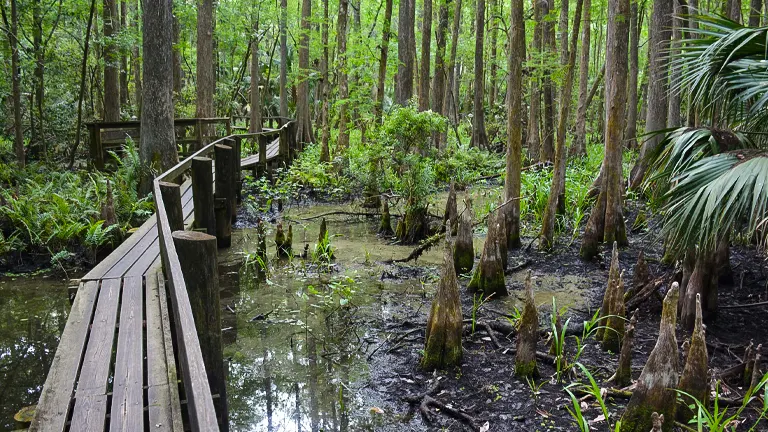
This haven for nature enthusiasts and wildlife admirers alike, promises an unforgettable journey through one of Florida’s oldest and most revered state parks. From its lush, green pathways to the chorus of native birds, every corner of the park whispers stories of natural beauty and serenity.
Characterizing Features of Highlands Hammock State Park
- Diverse Trail System: Highlands Hammock State Park boasts an extensive network of trails, each offering a unique perspective of the park’s natural beauty. From the famous boardwalk that meanders through a cypress swamp to the rugged paths that traverse dense hammocks and pine flatwoods, these trails are perfect for visitors seeking to immerse themselves in nature. They cater to all levels, from leisurely walks to more challenging hikes, allowing visitors to experience the park’s diverse ecosystems up close.
- Historic Civilian Conservation Corps (CCC) Structures: The park is dotted with structures built by the Civilian Conservation Corps during the 1930s. These include the museum, picnic pavilions, and other facilities that blend seamlessly with the natural surroundings. These historic structures are not just architectural marvels but also serve as silent reminders of the park’s role in American history, particularly during the Great Depression. They add a unique historical dimension to the visitor experience.
- Rich Biodiversity: One of the park’s most striking features is its rich biodiversity. It serves as a sanctuary for a wide range of plant and animal species, some of which are rare or endangered. The park’s varied habitats, from wetlands to hardwood hammocks, create an environment where species such as the gopher tortoise, Florida panther, and a myriad of bird species can thrive. This biodiversity makes the park a crucial area for conservation efforts and a fascinating spot for wildlife observation.
- Scenic Beauty and Serene Landscapes: The park is renowned for its scenic beauty, characterized by lush greenery, serene waterways, and a tranquil atmosphere that seems a world away from the hustle and bustle of city life. The ancient oak trees draped with Spanish moss, the reflective waters of the swamps, and the serene chorus of bird calls create a peaceful and picturesque setting. This natural beauty is not only a draw for photographers and nature enthusiasts but also provides a calming retreat for all visitors.
- Educational Opportunities: Beyond recreation, Highlands Hammock State Park is a hub for educational activities. The park offers interpretive programs and guided tours that provide insights into its ecological and historical significance. These educational opportunities are designed to foster a deeper understanding and appreciation of Florida’s natural and cultural heritage, making the park an ideal destination for families, students, and anyone interested in learning more about the environment.
- Commitment to Conservation: The park’s dedication to conservation is evident in its management of natural resources and its efforts to preserve its pristine environments. This commitment ensures the protection of its diverse habitats and species, maintaining the park’s ecological integrity for future generations. It’s a place where conservation and recreation harmoniously coexist, offering visitors a chance to enjoy nature while also understanding the importance of protecting it.
History of Highlands Hammock State Park
Highlands Hammock State Park, established in 1931, is steeped in both ecological and cultural history, making it one of Florida’s oldest and most historically significant state parks. The park’s inception is rooted in the early conservation movements of the 20th century, driven by a growing awareness of the need to preserve Florida’s unique natural landscapes. Its establishment was a response to the rampant land development and logging that threatened the region’s ecological balance. Local citizens, recognizing the area’s natural beauty and ecological importance, spearheaded efforts to protect it, leading to the creation of the park. This initiative marked a pivotal moment in Florida’s conservation history, setting a precedent for the protection of natural spaces statewide.

In the 1930s, during the era of the Great Depression, the park became an important project under the New Deal’s Civilian Conservation Corps (CCC). The CCC played a crucial role in the development of the park, constructing trails, boardwalks, and buildings, many of which are still in use today. These structures, crafted with native materials, are not only functional but also serve as historical landmarks, embodying the park’s legacy and the spirit of the era. The work of the CCC transformed Highlands Hammock into a more accessible and enjoyable space for the public, while providing employment and skills training for many young men during a time of economic hardship. Today, the park’s rich history is preserved and celebrated, offering visitors a window into Florida’s past and the enduring legacy of the CCC’s contributions to the nation’s public lands.
Unique Ecosystem of Highlands Hammock State Park
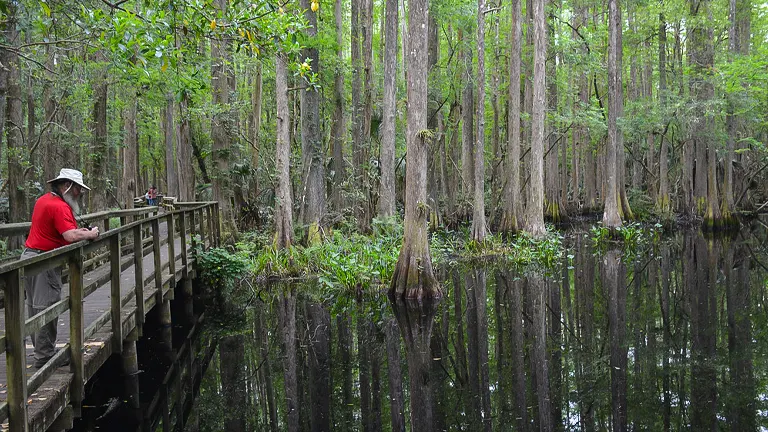
Highlands Hammock State Park stands out for its unique ecosystem, a remarkable testament to Florida’s natural diversity. This park is a mosaic of lush hammocks, ancient oak forests draped with Spanish moss, and serene cypress swamps, each providing a distinct habitat for a wide range of flora and fauna. The park’s wetlands are vital for water filtration and flood control, while its dense woodlands serve as a critical sanctuary for numerous species, including the elusive Florida panther and the gopher tortoise. This rich variety of habitats not only supports an impressive array of wildlife but also plays a significant role in maintaining ecological balance, making Highlands Hammock a crucial area for conservation and a living showcase of Florida’s environmental heritage.
Location of Highlands Hammock State Park

Highlands Hammock State Park is nestled in Central Florida, near the city of Sebring, making it a convenient natural retreat for residents and visitors alike. Located at a latitude of 27.4833 and a longitude of -81.4333, the park is easily accessible via major highways and roads, positioning it within a comfortable driving distance from metropolitan areas such as Tampa, Orlando, and Miami. This strategic location places it in the heart of Florida’s natural landscape, surrounded by the state’s distinctive flatwoods and wetlands. Its proximity to the Lake Wales Ridge, an ancient and ecologically rich area, further enhances the park’s appeal. The park’s location not only makes it a prime destination for those seeking a break from urban life but also situates it as an important ecological haven in Florida’s rapidly evolving environmental tapestry.
Additional Guides on How to Reach Highlands Hammock State Park:
1. From Tampa:
- Take I-4 E towards Orlando.
- Exit onto FL-570 E (Polk Pkwy) towards Lakeland/Winter Haven (toll road).
- Merge onto US-98 S.
- Follow US-27 S to FL-64 W in Avon Park.
- Turn left onto FL-64 W; the park will be on your right.
2. From Orlando:
- Take I-4 W towards Tampa.
- Take exit 55 to merge onto US-27 S towards Haines City.
- Continue on US-27 S, passing through Lake Wales and Avon Park.
- Turn left onto FL-64 W; the park will be on your right.
3. From Miami:
- Take I-95 N or Florida’s Turnpike N.
- Merge onto FL-70 W/Okeechobee Rd via Exit 152 towards Okeechobee.
- Turn left onto US-27 N.
- Turn right onto FL-64 W in Avon Park; the park will be on your right.
4. Public Transportation:
- Public transportation options are limited. The closest bus stations are in Sebring, which is serviced by Greyhound. From Sebring, you would need to arrange a taxi or rideshare service to the park.
5. GPS Navigation:
- Input the park’s coordinates (27.4833, -81.4333) or address (5931 Hammock Rd, Sebring, FL 33872) into your GPS for direct routes.
6. Air Travel:
- The nearest major airports are in Tampa and Orlando. From there, you can rent a car and follow the driving directions provided.
7. Local Accommodations:
- If you’re traveling from afar and plan to stay overnight, Sebring offers various accommodations. Staying in Sebring also allows you to explore local attractions before or after your park visit.
8. Check Road Conditions:
- Prior to your journey, it’s advisable to check current road conditions and any construction work that might affect your travel.
The Importance of Conservation and Recreation in Highlands Hammock State Park
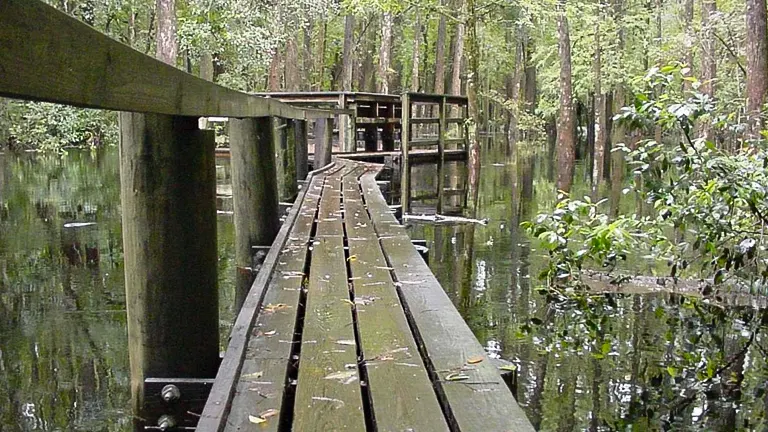
Highlands Hammock State Park plays a crucial role in both conservation and recreation, blending environmental stewardship with public enjoyment. As one of Florida’s oldest state parks, it is instrumental in preserving diverse ecosystems, such as wetlands, hammocks, and pine flatwoods, providing sanctuary for species like the Florida panther and the gopher tortoise. These conservation efforts are critical in maintaining ecological balance and ensuring environmental health for future generations. Simultaneously, the park serves as a vital recreational space, promoting physical activities like hiking and bird watching, which are essential for mental and physical well-being. Educational programs and interpretive trails further enrich visitor experiences, enhancing awareness and appreciation of nature. This integration of recreation with environmental education underscores the park’s role as not just a cherished natural retreat, but also a key player in fostering sustainable tourism and environmental consciousness in Florida.
Diverse Vegetation and Plant Species in Highlands Hammock State Park
- Live Oaks (Quercus virginiana): The Live Oak is a quintessential feature of the park, known for its sprawling branches and resilience. These majestic trees, draped with Spanish moss (Tillandsia usneoides), provide a classic Southern landscape and create a unique habitat for various wildlife.
- Sabal Palms (Sabal palmetto): As Florida’s state tree, the Sabal Palm is abundant within the park. These palms add to the park’s tropical feel and are critical to the local ecosystem, offering habitat and food sources for wildlife.
- Saw Palmetto (Serenoa repens): This low-growing palm is a common understorey plant in the park. It plays a crucial role in the ecosystem, providing cover for wildlife and serving as a food source for animals like the Florida black bear.
- Cypress Trees (Taxodium): The park’s wetter areas are characterized by Bald Cypress (Taxodium distichum) and Pond Cypress (Taxodium ascendens). These trees are adapted to wet conditions and are easily recognizable by their distinctive “knees” – protrusions that help with oxygen intake.
- Ferns and Epiphytes: The humid environment of the park supports a variety of ferns, including the Resurrection Fern (Pleopeltis polypodioides), and epiphytes like air plants and orchids. These plants add to the park’s biodiversity and offer a glimpse into Florida’s subtropical climate.
- Pine Flatwoods Vegetation: The park’s higher, drier areas are dominated by pine flatwoods, primarily Longleaf Pine (Pinus palustris) and Slash Pine (Pinus elliottii). These ecosystems are maintained by regular fire cycles and are home to a variety of plant and animal species.
- Wiregrass (Aristida stricta): A key component of the park’s pine flatwoods, wiregrass is a fire-tolerant species that thrives in Florida’s sandy soils. It’s an important species for maintaining the health and biodiversity of these ecosystems.
- Wildflowers: The park features a variety of native wildflowers, including the Liatris (Liatris), which bloom in beautiful purple spikes, and the Yellow Jessamine (Gelsemium sempervirens), known for its bright yellow, fragrant flowers. These wildflowers not only add color and beauty to the landscape but also play a role in pollination.


Fauna in Highlands Hammock State Park
- American Alligator (Alligator mississippiensis): The American Alligator is a flagship species of the park’s wetland habitats. These reptiles are often seen sunning themselves on the banks of water bodies or lurking in the water. They play a crucial role in the ecosystem as apex predators, helping to maintain the balance of aquatic life.
- Florida Panther (Puma concolor coryi): The elusive Florida Panther, a subspecies of the cougar, is one of the most iconic yet endangered animals in the park. Sightings are rare, but the presence of this apex predator signifies the park’s importance as a wildlife corridor and a haven for species at risk.
- Gopher Tortoise (Gopherus polyphemus): This keystone species is vital for the park’s ecosystem. The gopher tortoise digs burrows that provide shelter for over 350 other species, playing a significant role in maintaining the ecological diversity of the park.
- Red-shouldered Hawk (Buteo lineatus): Commonly seen soaring above the park, the Red-shouldered Hawk is a medium-sized bird of prey. These hawks play a vital role in controlling rodent populations and contribute to the park’s rich avian diversity.
- Great Horned Owl (Bubo virginianus): As a top predator in the park’s nocturnal food web, the Great Horned Owl contributes to controlling small mammal and bird populations. Their distinctive hooting can often be heard at dusk and dawn.
- White-tailed Deer (Odocoileus virginianus): The White-tailed Deer is a common sight, especially in the park’s open spaces and along the trails at dawn and dusk. They are a crucial part of the food chain, serving as prey for larger predators.
- Bobcat (Lynx rufus): These elusive felines are occasionally spotted by visitors. Bobcats in the park help to control rodent and rabbit populations, contributing to the ecosystem’s health.
- Variety of Bird Species: The park is a haven for birdwatchers, with a variety of species such as the Pileated Woodpecker (Dryocopus pileatus), the Barred Owl (Strix varia), and various warblers and songbirds. These birds play essential roles in pollination, seed dispersal, and insect control.
- Butterflies and Insects: The park’s diverse plant life supports a multitude of butterflies and insects, including species like the Zebra Longwing (Heliconius charithonia), Florida’s state butterfly. These small creatures are vital for pollination and serve as food sources for many birds and other wildlife.
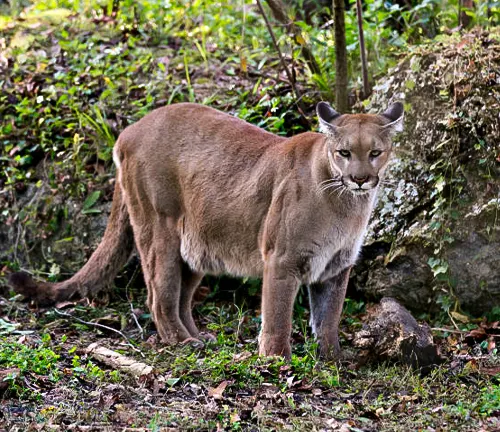

Different Attractions in Highlands Hammock State Park
The Hammock Loop Trail: The Hammock Loop is arguably the most popular trail in the park, renowned for its stunning natural scenery and dense foliage. This trail takes visitors through a primeval forest landscape, characterized by massive oak trees and lush undergrowth. Ideal for both leisurely strolls and more intensive hikes, it provides an immersive experience into the park’s unique hammock ecosystem, allowing visitors to appreciate the dense canopy and diverse plant life up close.
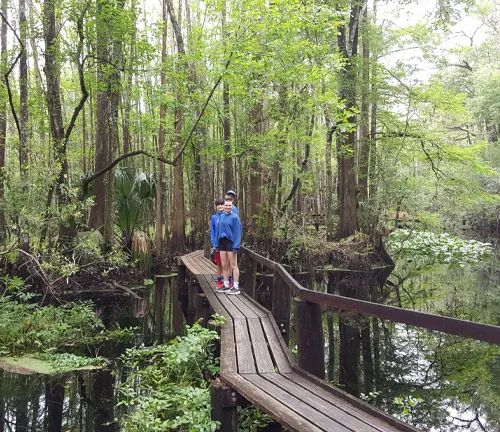

Cypress Swamp Trail: This trail offers an enchanting walk through a cypress swamp ecosystem. Featuring a boardwalk that winds through the swamp, it allows visitors to explore this unique habitat without disturbing the delicate environment. The Cypress Swamp Trail is particularly famous for its picturesque views and the opportunity to observe wildlife, including alligators and various bird species, in their natural habitat.
The Civilian Conservation Corps (CCC) Museum: The CCC Museum is a tribute to the Civilian Conservation Corps’ contributions to the park and the nation during the Great Depression. Housed in a historic CCC building, the museum showcases photographs, artifacts, and exhibits that tell the story of the young men who built the park. This attraction is not only educational but also offers a window into the history of the park and the broader New Deal era.
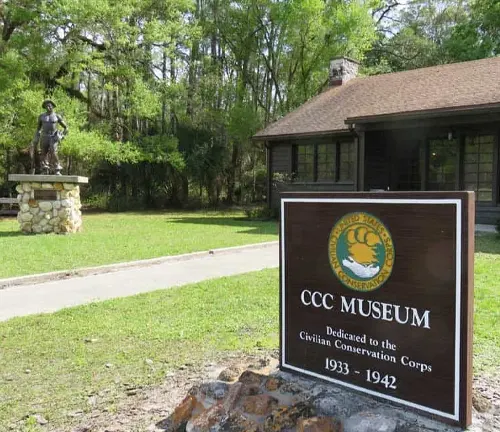
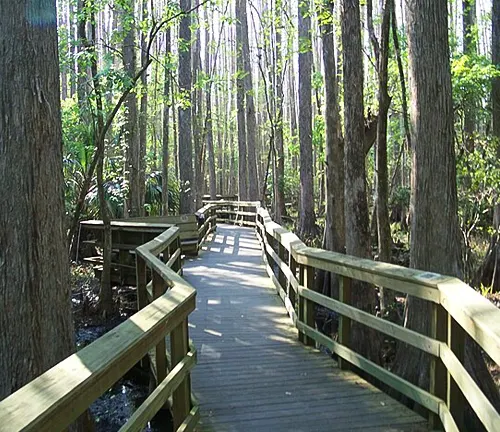
Catwalks and Observation Decks: The park features several catwalks and observation decks, providing visitors with vantage points to view the park’s landscapes and wildlife. These structures are strategically placed to offer panoramic views of the park’s wetlands, hammocks, and other natural features. They are popular spots for bird watching, photography, and simply enjoying the serene beauty of the park.
Picnic Areas: Highlands Hammock State Park is equipped with numerous picnic areas, making it an ideal spot for family outings or a relaxing day in nature. These areas are equipped with tables and grills, set amidst the park’s scenic natural backdrop. They provide a perfect setting for visitors to unwind and enjoy a meal surrounded by the beauty of the park.


Guided Tram Tours: For those who prefer a more guided experience, the park offers tram tours. These tours are led by knowledgeable guides who provide insights into the park’s history, ecology, and wildlife. The tram tours are an excellent way to explore the park’s more remote areas and learn about its natural and cultural heritage.
Children’s Playground: The park also caters to its younger visitors with a dedicated children’s playground. This area provides a safe and fun environment for children to play, making the park a family-friendly destination. It’s a great spot for kids to expend energy while adults relax in a natural setting.
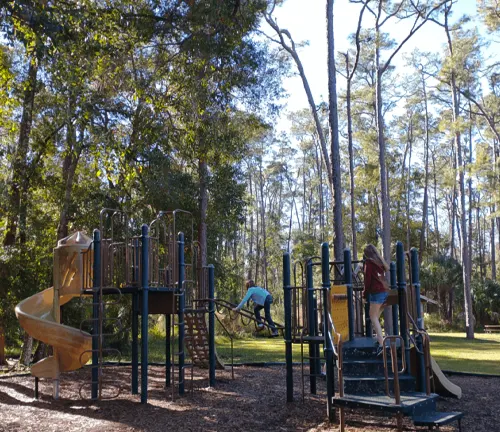
Recreational Activities in Highlands Hammock State Park
- Hiking: Hiking is one of the most popular activities in Highlands Hammock State Park. The park features a variety of trails, each offering a different experience. From the easy and scenic Hammock Loop to the more challenging Ancient Hammock Trail, these paths cater to all levels of hikers. While trekking these trails, hikers can immerse themselves in the park’s lush landscapes, observe wildlife, and enjoy the tranquility of nature.
- Bird Watching: The park is a haven for bird enthusiasts, boasting a rich avian population. With its diverse habitats, it attracts a variety of bird species, making it an ideal spot for bird watching. The park’s bird list includes species such as the Red-shouldered Hawk, Barred Owl, and various warblers. Observation decks and quiet trails provide perfect opportunities for birders to spot and photograph these feathered residents.
- Cycling: Cycling is a delightful way to explore the expanses of Highlands Hammock State Park. The park’s roads and designated trails offer a safe and scenic environment for cyclists. Whether it’s a leisurely ride or a more vigorous cycle, the park’s landscapes provide a picturesque backdrop for this activity.
- Wildlife Observation: The park’s diverse ecosystems make it a fantastic location for wildlife observation. Visitors can spot species like the American alligator, white-tailed deer, and various reptiles and amphibians. The park’s natural setting allows for up-close encounters with Florida’s native wildlife in their natural habitat.
- Photography: With its stunning natural beauty, the park is a paradise for photographers. From the majestic live oaks draped with Spanish moss to the serene waters of the cypress swamps, there are endless opportunities to capture the beauty of the Floridian landscape. The diverse flora and fauna also provide ample subjects for wildlife and macro photography.
- Picnicking: The park offers numerous picnic areas equipped with tables and grills, ideal for family gatherings or a peaceful lunch in the midst of nature. These picnic spots are nestled in picturesque locations throughout the park, allowing visitors to relax and dine in the beauty of the natural surroundings.
- Ranger-Led Programs: For those interested in learning more about the park’s history and natural environment, ranger-led programs and guided tours are available. These educational experiences provide insights into the park’s ecosystems, wildlife, and the historical significance of the area, enriching the visitor experience.
- Tram Tours: The park offers guided tram tours, which are perfect for visitors who want to explore the park’s more remote areas without extensive hiking. These tours are informative and allow visitors to learn about the park’s habitats, history, and wildlife from experienced guides.
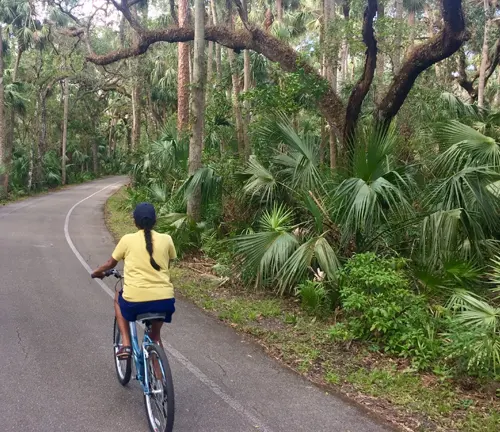
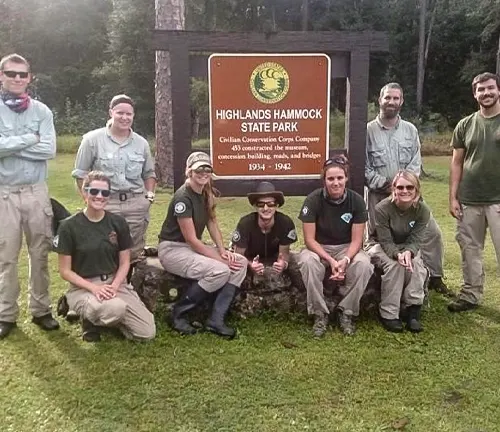
Different Facilities and Amenities in Highlands Hammock State Park
- Camping Facilities: Highlands Hammock State Park offers a well-equipped camping area, ideal for both RV and tent campers. The campground includes amenities such as electric hookups, water access, a dump station, and well-maintained restroom facilities with showers. Nestled within the natural beauty of the park, the campsites offer a perfect blend of outdoor adventure and comfort, making it an ideal choice for families, groups, or solo travelers looking to immerse themselves in nature.
- Picnic Areas: Scattered throughout the park are numerous picnic areas, each offering a serene setting for a meal amidst nature. These areas are equipped with picnic tables and grills, making them perfect for family outings, group gatherings, or a quiet lunch in the great outdoors. The picnic areas are strategically located to offer beautiful views of the park’s landscapes while providing a convenient and comfortable dining experience.
- Visitor Center: The park’s visitor center is a hub of information and resources for guests. It provides educational exhibits about the park’s ecosystems, history, and wildlife. Visitors can find maps, brochures, and knowledgeable staff ready to assist with information about trail conditions, park events, and local wildlife. The visitor center is an essential starting point for anyone looking to maximize their experience in the park.
- Playground: Catering to its younger visitors, the park features a playground area where children can play and enjoy outdoor activities. The playground is designed to be safe and fun, allowing kids to engage in physical activity while adults can relax in a nearby picnic area or enjoy the natural surroundings.
- Boardwalks and Trails: The park is renowned for its extensive network of trails and boardwalks, which allow visitors to explore diverse habitats. These pathways are well-maintained, providing safe and accessible routes for hiking, bird watching, and nature photography. The boardwalks, especially, offer a unique way to experience the park’s wetland areas without disturbing the delicate ecosystem.
- Recreational Fields: For those interested in sports and group activities, the park offers open recreational fields. These fields are suitable for a variety of activities, such as frisbee, soccer, or other group games, providing an excellent opportunity for visitors to engage in physical activities in a scenic setting.
- Restrooms and Concessions: The park is equipped with clean and accessible restroom facilities, ensuring comfort and convenience for visitors. Additionally, there are concession stands where guests can purchase snacks, drinks, and souvenirs. These facilities enhance the visitor experience by providing basic necessities and keepsakes from their trip.
- Educational Programs and Guided Tours: Offering a range of educational programs and guided tours, the park provides visitors with opportunities to learn about its natural and historical significance. These programs are often led by knowledgeable park rangers and can include nature walks, wildlife spotting tours, and historical talks, enriching the overall experience at the park.
Tips and Advice for Visiting Highlands Hammock State Park
- Plan Your Visit According to Weather: Florida’s weather can be unpredictable, with frequent afternoon showers in summer and cooler temperatures in winter. Check the weather forecast before your visit to ensure you are prepared. During summer, lightweight, breathable clothing and rain gear are recommended, while warmer layers are advisable for cooler months. Always carry water, sunscreen, and insect repellent, regardless of the season, to ensure a comfortable experience.
- Stay on Designated Trails: For your safety and to preserve the park’s delicate ecosystems, it is important to stay on designated trails. Venturing off-trail can lead to damaging sensitive habitats and increases the risk of getting lost or encountering wildlife in potentially dangerous situations. The park’s trails are designed to provide the best views and experiences while protecting the natural environment.
- Respect Wildlife: Highlands Hammock State Park is home to a diverse range of wildlife, including alligators and snakes. While observing these creatures can be a highlight of your visit, it’s important to keep a safe distance and never feed or attempt to touch them. Feeding wildlife can alter their natural behaviors and potentially create dangerous situations for both animals and visitors.
- Be Prepared for Outdoor Conditions: The park is largely an outdoor wilderness area. Wear appropriate footwear, such as hiking boots or sturdy shoes, for trail walking. If you plan to explore the swamp areas or during wetter months, waterproof footwear might be a good idea. Also, carry a map of the park, available at the visitor center, to navigate the trails and facilities effectively.
- Arrive Early During Peak Times: The park can get busy during weekends and holidays. Arriving early not only ensures a good parking spot but also a more peaceful experience on the trails and at other facilities. Early mornings are also excellent for wildlife viewing, as many animals are more active during cooler hours.
- Bring Sufficient Water and Snacks: There are limited food and beverage options available inside the park, so it’s advisable to bring enough water, especially if you plan to hike or engage in other physical activities. Snacks or a packed lunch will allow you to refuel as needed, especially if you’re spending the whole day exploring.
- Take Advantage of Ranger-Led Programs and Tours: The park offers a variety of ranger-led programs and guided tours that can greatly enhance your visit. These programs provide valuable insights into the park’s history, wildlife, and ecosystems. Check the park’s schedule in advance and plan to participate in these informative and engaging sessions.
- Practice Leave No Trace Principles: To help preserve the park’s natural beauty and wildlife habitats, it’s important to follow Leave No Trace principles. This includes disposing of waste properly, leaving what you find, and being considerate of other visitors. Ensuring that you leave the park as you found it will help protect it for future generations to enjoy.
Recommendation
Discover the wonders of Highlands Hammock State Park, a true jewel in Florida’s natural landscape. Perfect for nature enthusiasts and families, its beautiful trails, diverse wildlife, and rich history offer an unforgettable experience. Whether for hiking, bird watching, or simply unwinding in nature, this park is a must-visit destination. Don’t miss out on one of Florida’s most cherished natural retreats!
Conclusion
In essence, Highlands Hammock State Park is a treasure trove of natural beauty and history. With its rich biodiversity, historic trails, and serene landscapes, the park offers a unique escape into Florida’s wilderness. It’s a must-visit for anyone looking to explore the state’s natural wonders, combining adventure, education, and relaxation in one picturesque location. A visit to Highlands Hammock is not just a day out in nature, but an unforgettable experience that leaves a lasting impression.
FAQs
- What makes Highlands Hammock State Park different from other Florida state parks?
Highlands Hammock is distinguished by its rich history, being one of the oldest parks in Florida. It also boasts a unique mix of ecosystems, including dense hammocks and cypress swamps, and has structures built by the Civilian Conservation Corps during the 1930s. - Can I participate in any citizen science projects while visiting the park?
Yes, visitors can engage in citizen science projects like bird counts and wildlife monitoring. These projects vary by season and interest; it’s best to check with the park staff or the website for current opportunities. - What is the best time of year to visit for bird watching?
The spring and fall migrations are particularly exciting times for bird watching in the park, as a variety of migratory bird species pass through. However, year-round, the park is home to a diverse bird population. - Are there any unique plants or animals I should look out for in the park?
Keep an eye out for the park’s ancient oak trees, air plants, and orchids. In terms of wildlife, the gopher tortoise, a keystone species, and the rare Florida panther are notable inhabitants. - Does the park offer any night-time programs or activities?
Occasionally, the park organizes night-time walks or stargazing events, offering a different perspective of its natural beauty. Check the park’s event calendar for upcoming activities. - What photography opportunities does the park offer?
The park is a photographer’s delight with its lush landscapes, abundant wildlife, and historic CCC structures. The early morning light is particularly magical for landscape and wildlife photography. - Is there a way to volunteer and contribute to the park?
Yes, the park welcomes volunteers for various tasks, including trail maintenance, visitor services, and educational programming. Interested individuals can contact the park office or visit the website for more information. - Are there any lesser-known areas of the park that are a must-visit?
Beyond the popular trails, the park’s lesser-known areas, like the Fern Garden and the Ancient Hammock Trail, offer quieter and equally beautiful experiences. These less frequented spots are perfect for visitors seeking solitude and a deeper connection with nature.
In summary, Highlands Hammock State Park is a captivating blend of nature’s artistry and historical charm. Whether you’re a nature lover, history enthusiast, or just seeking a peaceful retreat, this park promises an enriching and memorable experience. Explore its trails, discover its secrets, and let the timeless beauty of Highlands Hammock State Park inspire you.



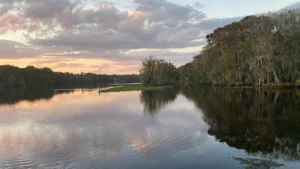
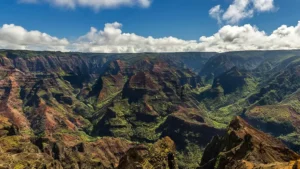
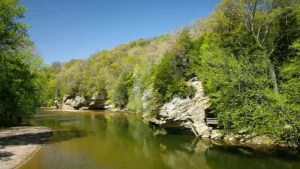





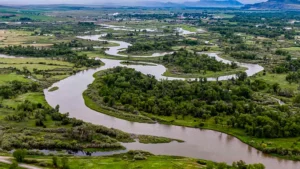
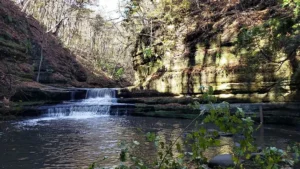

Leave your comment